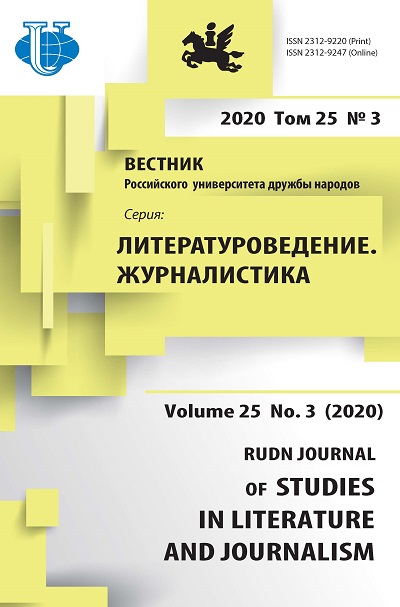Songwriting and functional load in the “Diary of Ephemeral Life”
- Authors: Gafurova K.S.1
-
Affiliations:
- The University of World Economy and Diplomacy
- Issue: Vol 25, No 3 (2020)
- Pages: 511-520
- Section: LITERARY CRITICISM
- URL: https://journals.rudn.ru/literary-criticism/article/view/24827
- DOI: https://doi.org/10.22363/2312-9220-2020-25-3-511-520
Cite item
Full Text
Abstract
In the history of Japan, the Heian era is considered the “golden age”, the heyday of aristocratic literature. It was then that the aristocracy became the creator of literary works, which to this day are the masterpieces of world literature. One of the unique phenomena of Japanese classical literature is recognized diary, including female diary literature of the Heian era (IX-XII centuries). Diary literature differs from other genres in terms of presentation style, artistic language, plot and composition, figurative system, presentation methods. Mitsitsuno no haha (935-996), who enriched the Japanese medieval art tradition with an original literary style, a new theme, a new poetic vision, new sensuality, is recognized as the most striking representative of women’s diary literature in Japan. In the “Diary of Ephemeral Life”, by Mitsitsu no haha the tradition of poetic inserts is widely embodied, a special layer of poetic material (three-part, five-part) is highlighted. They serve as a necessary attribute for conveying an emotional mood, creating an image, enhancing important moments of importance. Considering the artistic features of the diary, the author of the article makes an attempt to suggest that poems are additional material in the transfer of various emotional states of the heroine. Poetic insertions enhance one or another mood, establish an emotional connection between the external and internal world of the author. Analysis of poetic inserts makes it possible to determine their functional load.
Keywords
About the authors
Khakima Sh. Gafurova
The University of World Economy and Diplomacy
Author for correspondence.
Email: hakimaanor@mail.ru
Candidate of Philological Sciences, Head of the Oriental Languages Department
54 Mustaqillik Ave, Tashkent, 100077, Republic of UzbekistanReferences
- Kimura, Masanori. (1975). “Diary of Ephemeral Life and “Travel from Tosa”. Classics of Japanese literature. Tokyo. (In Japanese.)
- Goreglyad, V.N. (1975). Dnevniki i esse v yaponskoy literature X–XIII vv. [Diaries and essays in Japanese literature of the X–XIII centuries]. Moscow, Nauka Publ.
- Imai, Takuji. (1999). Study of the Heian diaries. Tokyo. (In Japanese.)
- Imai, Takuji. (2001). Lectures on women’s diary literature. Tokyo. (In Japanese.)
- Kikuiti, Yassuhiko. (1995). “Tosa-nikki” and the “Diary of Ephemeral Life”. The classic of Japanese literature (vol. 13). Tokyo. (In Japanese.)
- Yaponskie srednevekovie dnevniki [Japanes medieval diaries] (p. 623). (2001). Saint Petersburg, Severo-Zapad Press.
















